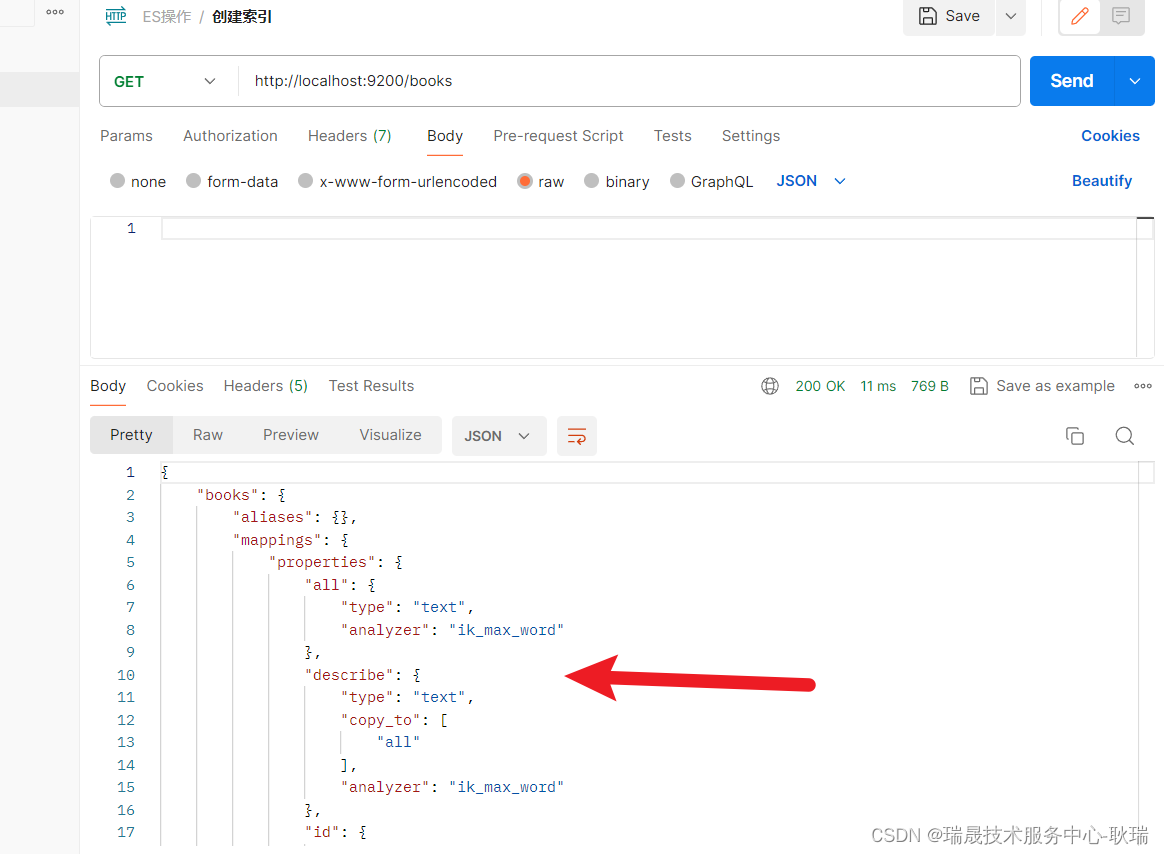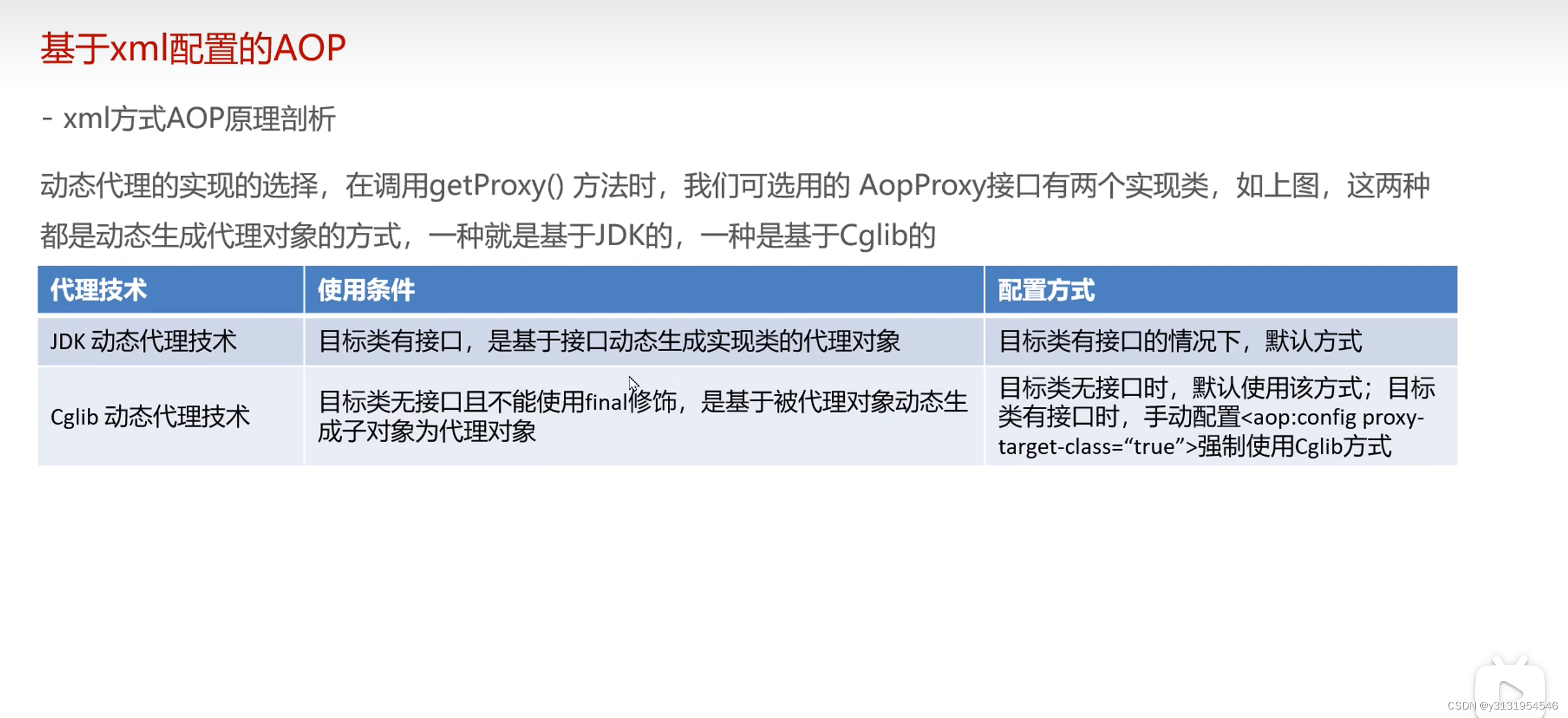背景
目前公司的一个老项目,查询贼慢,需要想办法提升一下速度,于是就想到了ES,现在尝试一下将ES整合到项目中来提升检索效率。
ES是基于倒排索引实现的,倒排索引中一个表相当于一个索引,表中的每条记录都是一个文档(JSON数据),系统会先对字段数据进行分词,然后给词条建立索引,并映射到文档id。在查询的时候根据输入进行分词,然后根据词条走索引查询文档id,再根据文档id查询文档并放入结果集,最后将结果集返回。
一般来说,ES算是难度较高的一个技术栈,需要中高级才能熟练驾驭,新手入门比较难,因而我选中了对新手更加友好的easy–es,其在ES的基础上做了封装,使得使用起来和MybatisPlus很像,简单上手。
Elastic Search下载
ES官网
按照官方推荐下载7.x的ES,我下载了和官方demo一样的7.14.0版本。
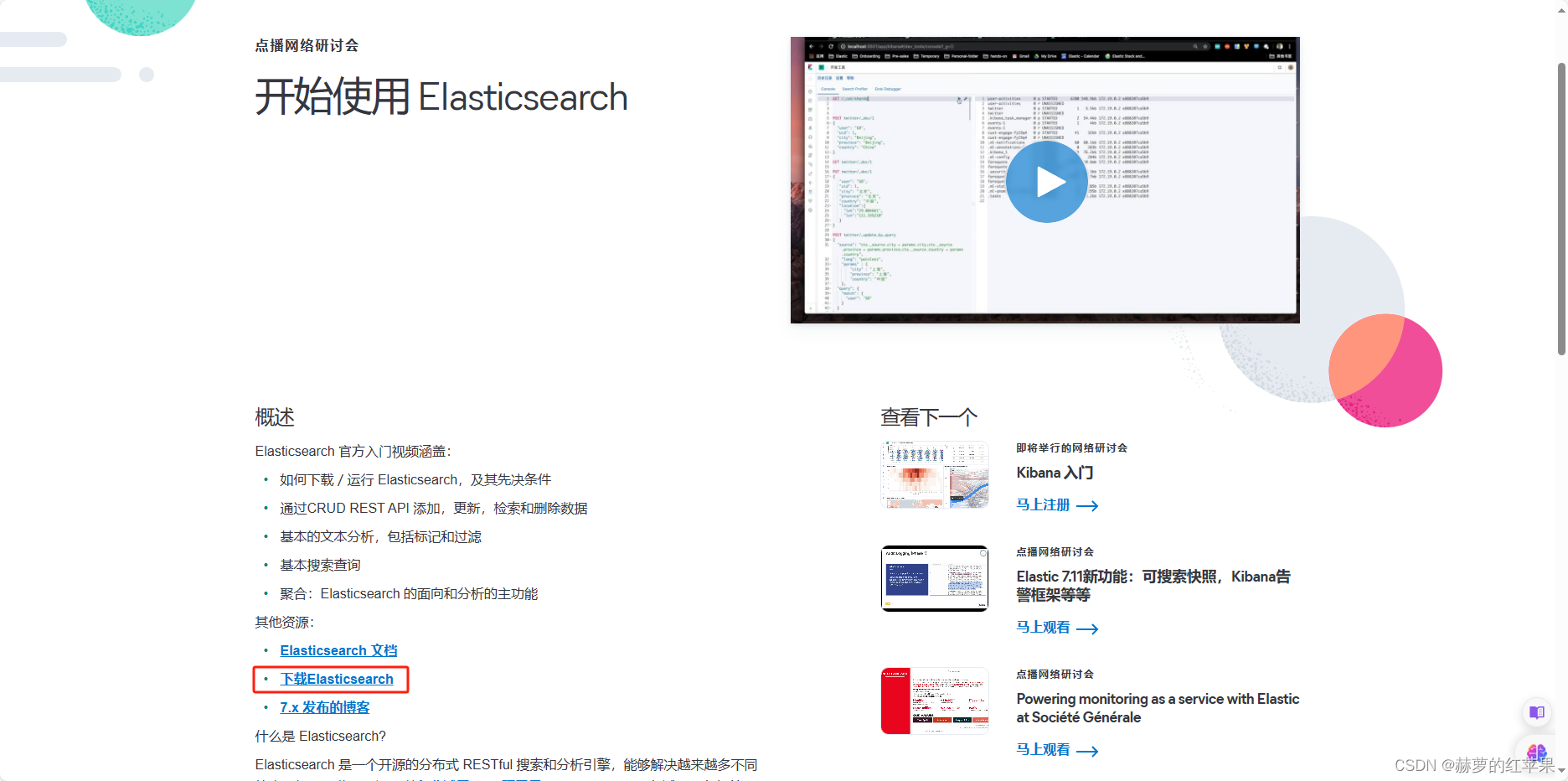

输入7.14.0搜索该版本并下载
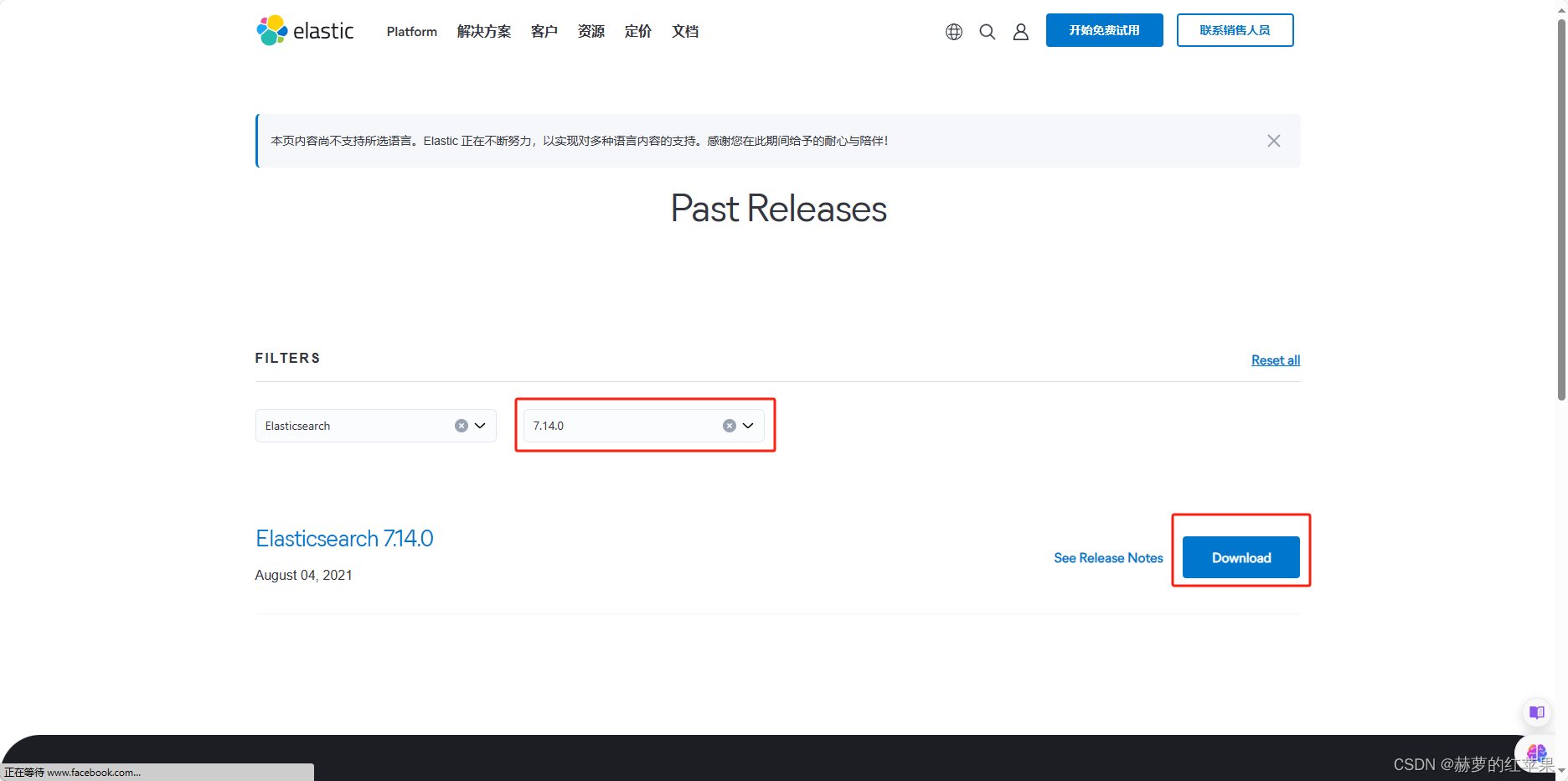
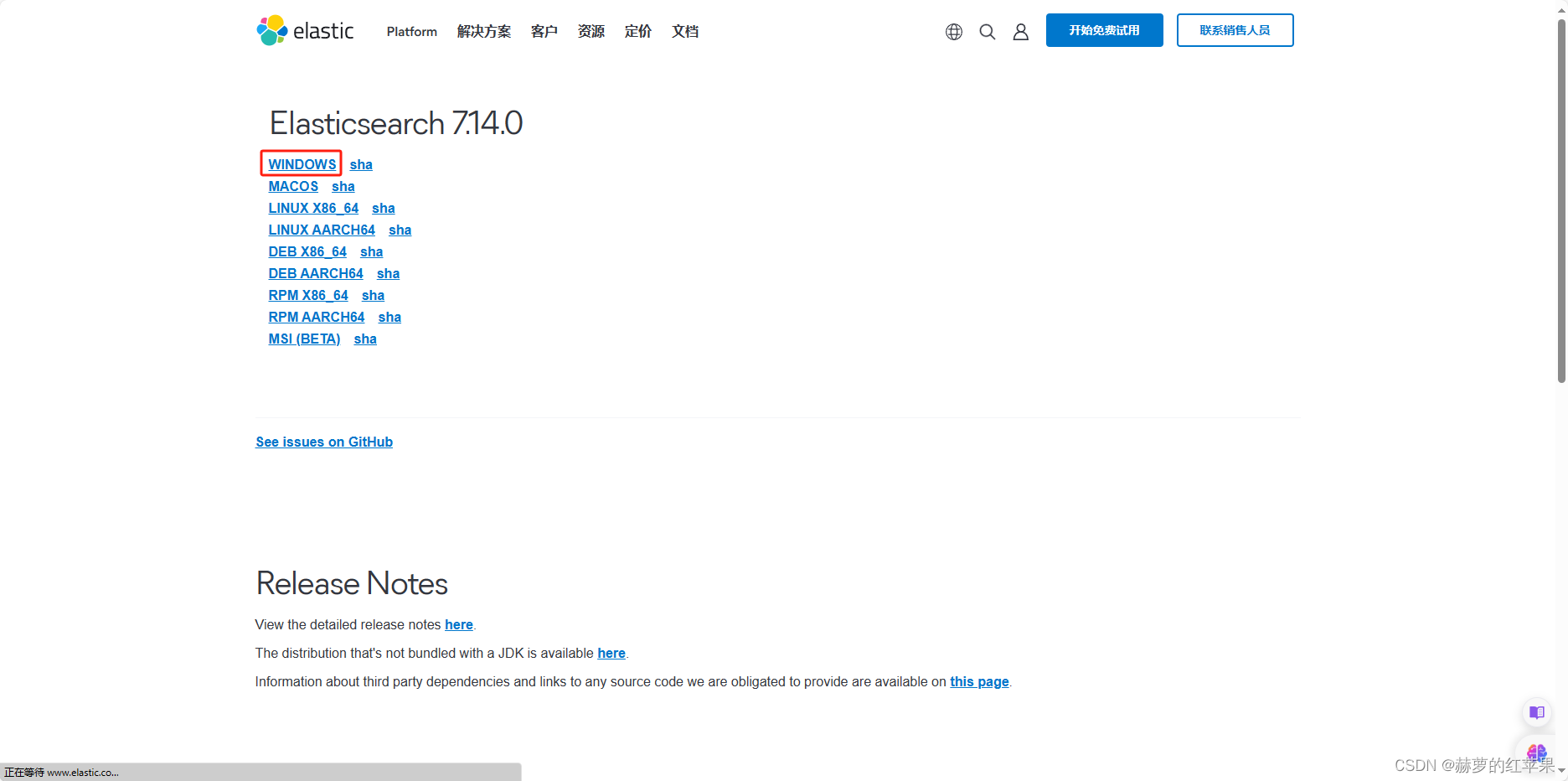
下载完成之后解压,并去到bin目录,双击elasticsearch.bat文件启动elasticsearch。
Springboot整合ES
- 打开Springboot项目(或创建一个Springboot项目),先全局搜索elastic,看看项目是否已经引入过ES,如果有,需要去掉或者更改版本为7.14.0。印象中不同版本的Springboot默认引入的一定版本的ES。
- 在POM文件引入依赖
<!-- 引入easy-es最新版本的依赖-->
<dependency>
<groupId>org.dromara.easy-es</groupId>
<artifactId>easy-es-boot-starter</artifactId>
<!--这里Latest Version是指最新版本的依赖,比如2.0.0,可以通过下面的图片获取-->
<version>Latest Version</version>
</dependency>
<!-- 排除springboot中内置的es依赖,以防和easy-es中的依赖冲突-->
<dependency>
<groupId>org.springframework.boot</groupId>
<artifactId>spring-boot-starter-web</artifactId>
<exclusions>
<exclusion>
<groupId>org.elasticsearch.client</groupId>
<artifactId>elasticsearch-rest-high-level-client</artifactId>
</exclusion>
<exclusion>
<groupId>org.elasticsearch</groupId>
<artifactId>elasticsearch</artifactId>
</exclusion>
</exclusions>
</dependency>
<dependency>
<groupId>org.elasticsearch.client</groupId>
<artifactId>elasticsearch-rest-high-level-client</artifactId>
<version>7.14.0</version>
</dependency>
<dependency>
<groupId>org.elasticsearch</groupId>
<artifactId>elasticsearch</artifactId>
<version>7.14.0</version>
</dependency>
easy-es:
enable: true #默认为true,若为false则认为不启用本框架
address: 127.0.0.1:9200 # es的连接地址,必须含端口 若为集群,则可以用逗号隔开 例如:127.0.0.1:9200,127.0.0.2:9200
# username: elastic #若无 则可省略此行配置。因为刚下载的ES默认不用账号密码登录,所以注掉
# password: WG7WVmuNMtM4GwNYkyWH #若无 则可省略此行配置
@EsMapperScan("org.jeecg.modules.test.esmapper")
@SpringBootApplication
public class JeecgSystemApplication extends SpringBootServletInitializer {
@Override
protected SpringApplicationBuilder configure(SpringApplicationBuilder application) {
return application.sources(JeecgSystemApplication.class);
}
public static void main(String[] args) throws UnknownHostException {
ConfigurableApplicationContext application = SpringApplication.run(JeecgSystemApplication.class, args);
}
}
package org.jeecg.modules.message.entity;
import org.dromara.easyes.annotation.IndexField;
import org.dromara.easyes.annotation.IndexName;
import org.dromara.easyes.annotation.rely.Analyzer;
import org.dromara.easyes.annotation.rely.FieldType;
import org.jeecg.common.aspect.annotation.Dict;
import org.jeecg.common.system.base.entity.JeecgEntity;
import org.jeecgframework.poi.excel.annotation.Excel;
import org.springframework.format.annotation.DateTimeFormat;
import com.baomidou.mybatisplus.annotation.TableName;
import com.fasterxml.jackson.annotation.JsonFormat;
import lombok.Data;
import lombok.EqualsAndHashCode;
import lombok.experimental.Accessors;
@Data
@IndexName
public class SysMessage{
/** ID */
@TableId(type = IdType.ASSIGN_ID)
private java.lang.String id;
/**推送内容*/
private java.lang.String esContent;
/**推送所需参数Json格式*/
private java.lang.String esParam;
/**接收人*/
private java.lang.String esReceiver;
/**推送失败原因*/
private java.lang.String esResult;
/**发送次数*/
private java.lang.Integer esSendNum;
/**推送状态 0未推送 1推送成功 2推送失败*/
private java.lang.String esSendStatus;
/**推送时间*/
@JsonFormat(timezone = "GMT+8",pattern = "yyyy-MM-dd HH:mm:ss")
@DateTimeFormat(pattern="yyyy-MM-dd HH:mm:ss")
private java.util.Date esSendTime;
/**消息标题*/
private java.lang.String esTitle;
/**推送方式:1短信 2邮件 3微信*/
private java.lang.String esType;
/**备注*/
private java.lang.String remark;
/** 创建人 */
private java.lang.String createBy;
/** 创建时间 */
@JsonFormat(timezone = "GMT+8", pattern = "yyyy-MM-dd HH:mm:ss")
@DateTimeFormat(pattern = "yyyy-MM-dd HH:mm:ss")
private java.util.Date createTime;
/** 更新人 */
private java.lang.String updateBy;
/** 更新时间 */
@JsonFormat(timezone = "GMT+8", pattern = "yyyy-MM-dd HH:mm:ss")
@DateTimeFormat(pattern = "yyyy-MM-dd HH:mm:ss")
private java.util.Date updateTime;
}
- 创建mapper类
package org.jeecg.modules.test.esmapper;
import org.dromara.easyes.core.core.BaseEsMapper;
import org.jeecg.modules.message.entity.SysMessage;
public interface DocumentMapper extends BaseEsMapper<SysMessage> {
}
@Resource
private DocumentMapper documentMapper;
@GetMapping("/createIndex")
@ApiOperation("创建索引")
public Object createIndex(String a){
Boolean index = documentMapper.createIndex();
System.out.println(index);
return index;
}
@GetMapping("/createDoc")
@ApiOperation("创建文档")
public Object createDoc(String a,String b){
SysMessage sysMessage=new SysMessage();
sysMessage.setEsContent(a);
sysMessage.setEsTitle(b);
sysMessage.setEsReceiver("系统管理员");
sysMessage.setEsSendNum(10);
Integer insert = documentMapper.insert(sysMessage);
return insert;
}
@GetMapping("/updateDoc")
@ApiOperation("updateDoc")
public Object updateDoc(String a){
LambdaEsUpdateWrapper<SysMessage> wrapper=new LambdaEsUpdateWrapper<>();
wrapper.eq(SysMessage::getEsContent,a)
.set(SysMessage::getEsContent,"更改后的标题");
Integer update = documentMapper.update(null, wrapper);
return update;
}
@GetMapping("/getDoc")
@ApiOperation("查询文档")
public Object getDoc(String a){
List<SysMessage> list = EsWrappers.lambdaChainQuery(documentMapper).like(SysMessage::getEsContent, a).list();
return list;
}
- 浏览器安装一个ES可视化插件。我安装的是es-client
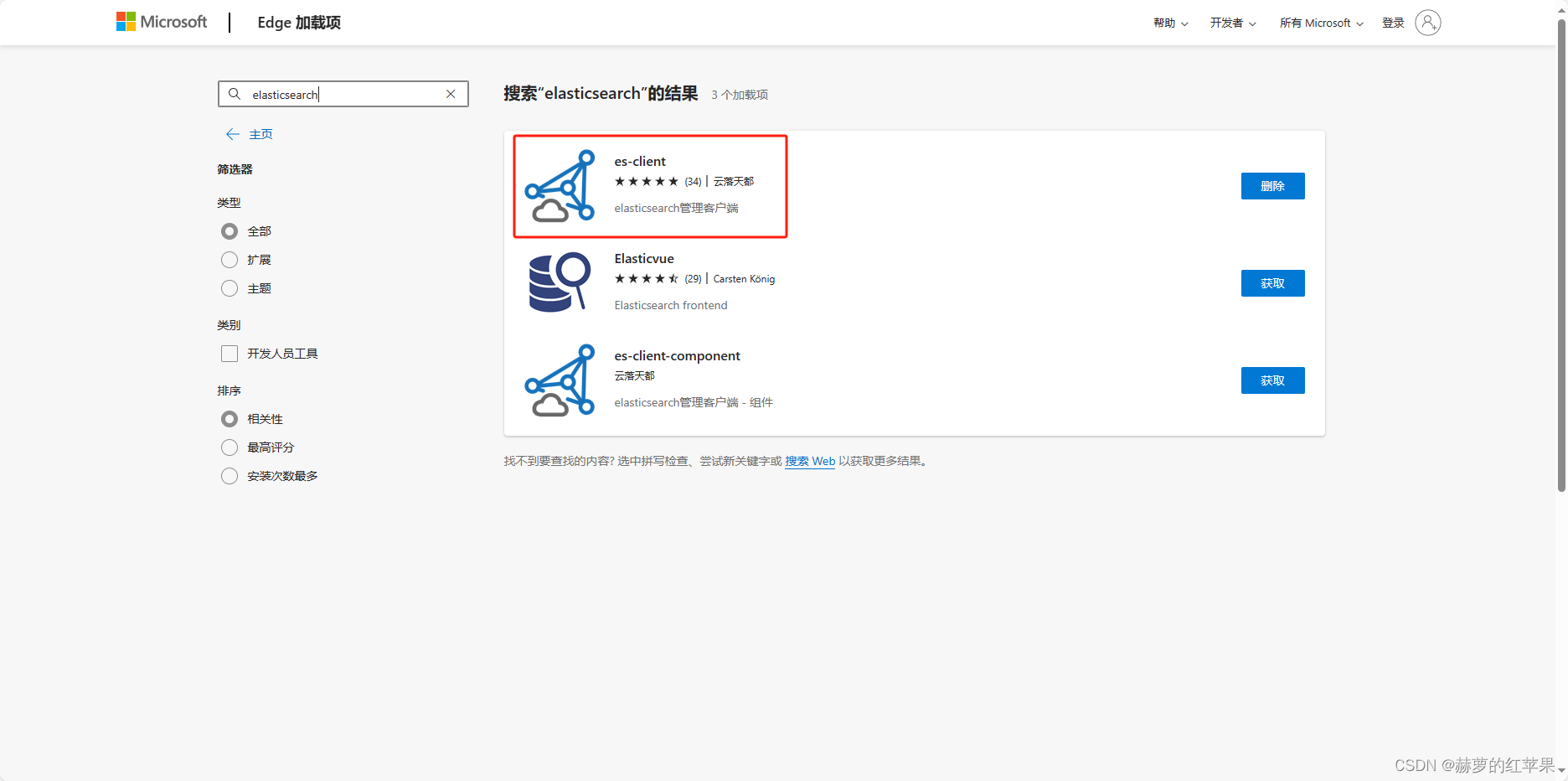
添加连接

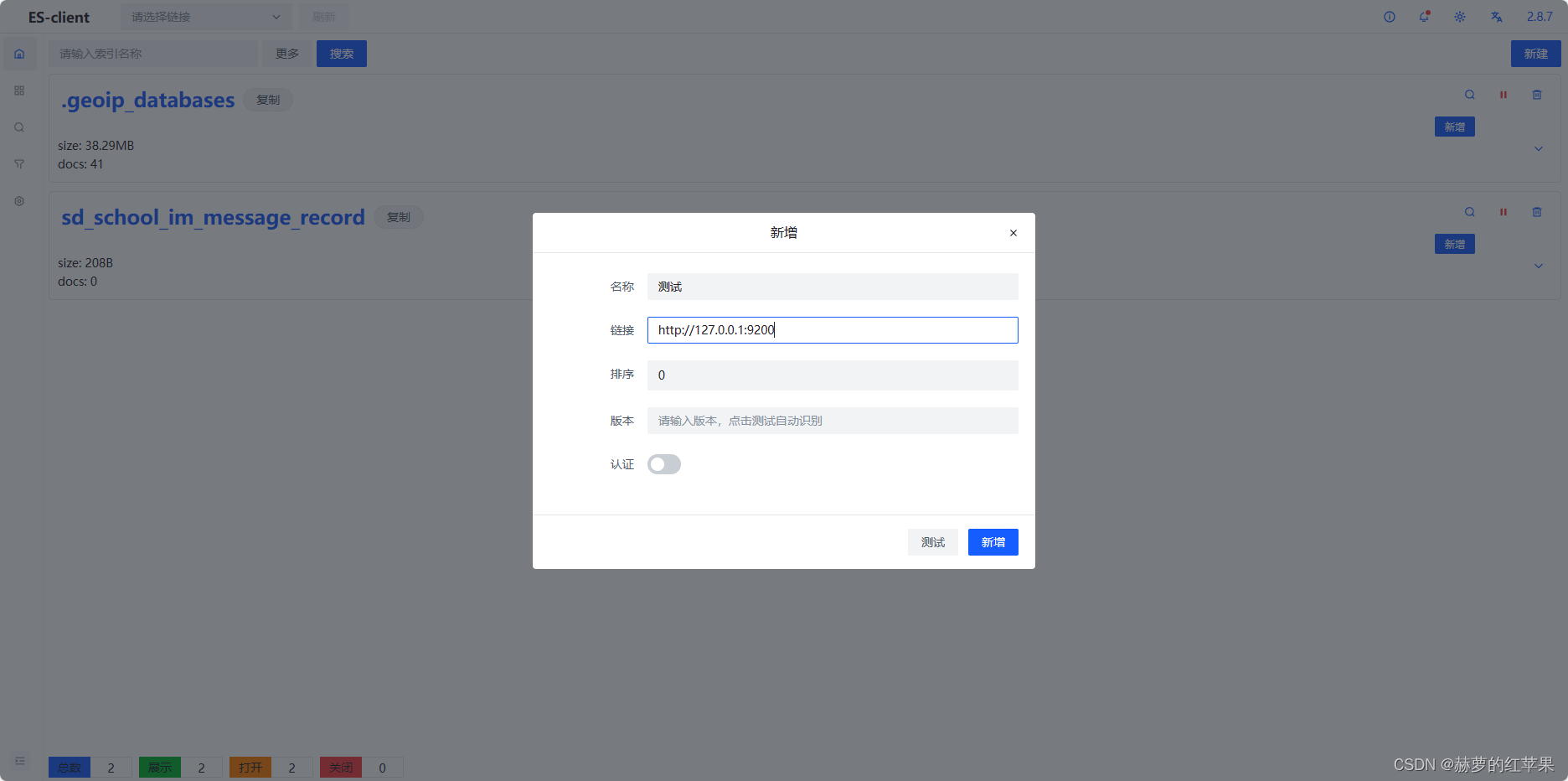
选中创建的连接,目前还没有索引。
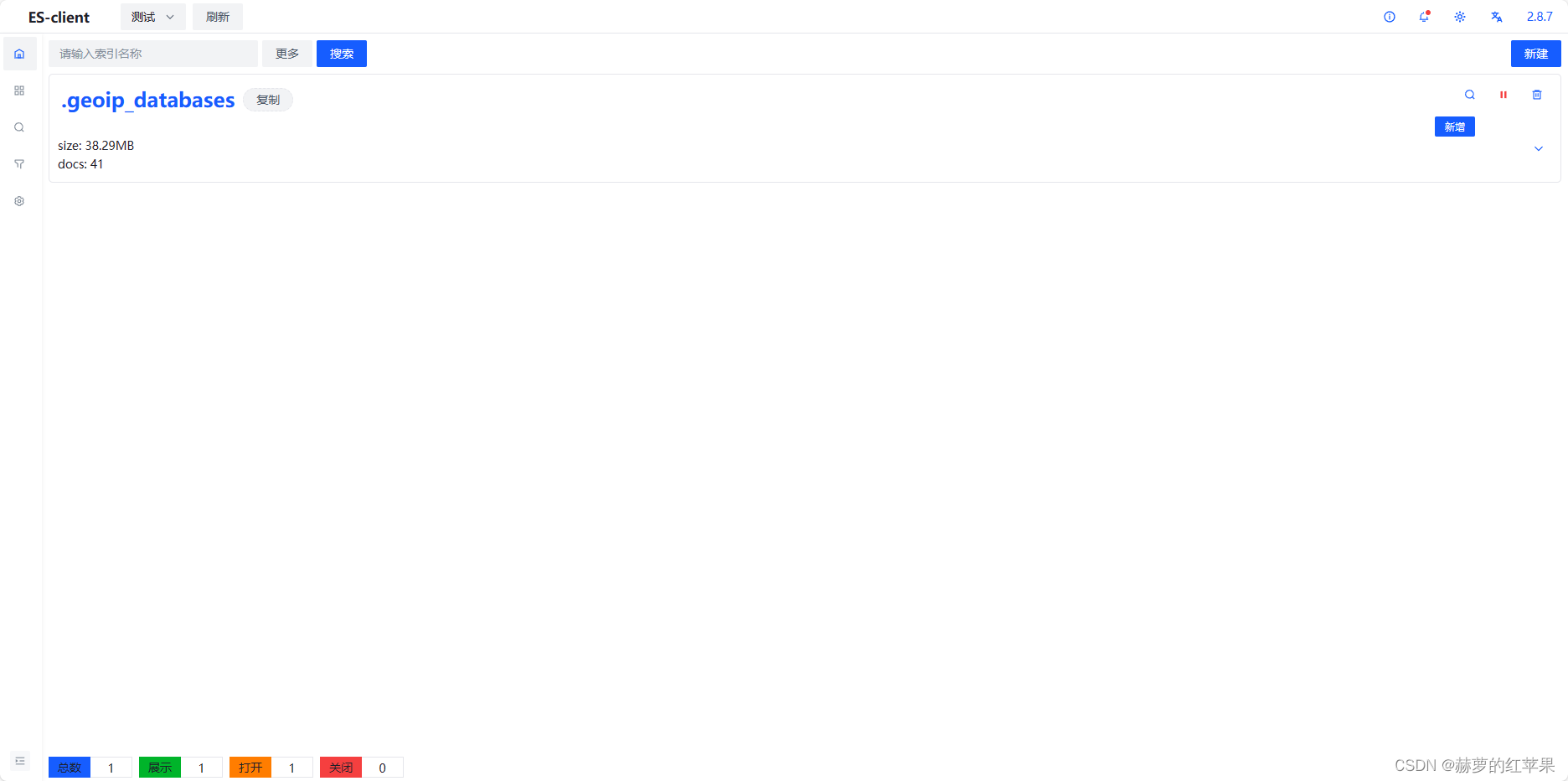
- 测试
启动Springboot项目,调用createIndex接口,创建索引 。然后回到浏览器插件,点击刷新,可以看到创建了一个索引。
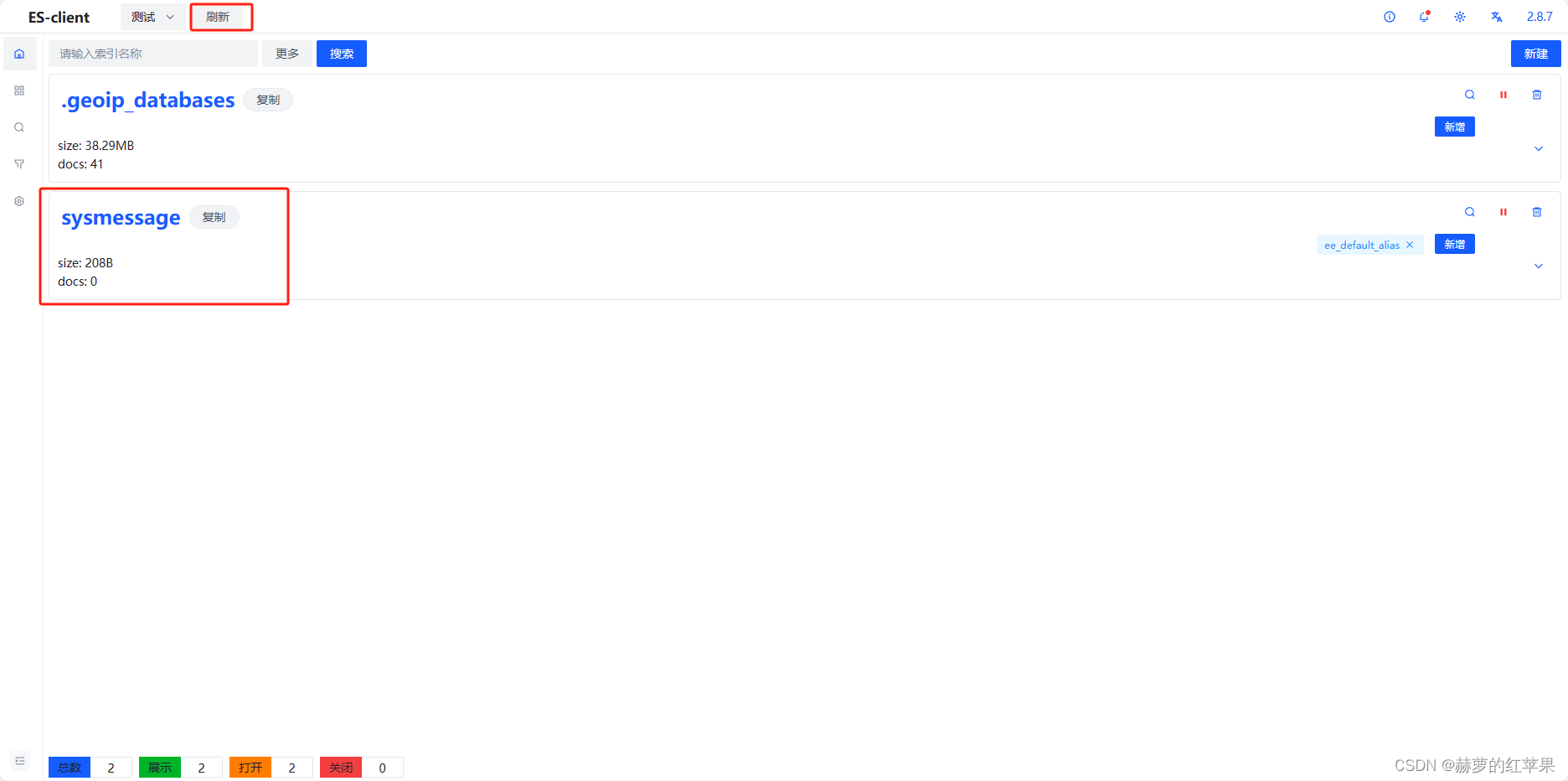
调用createDoc接口,创建一个文档记录
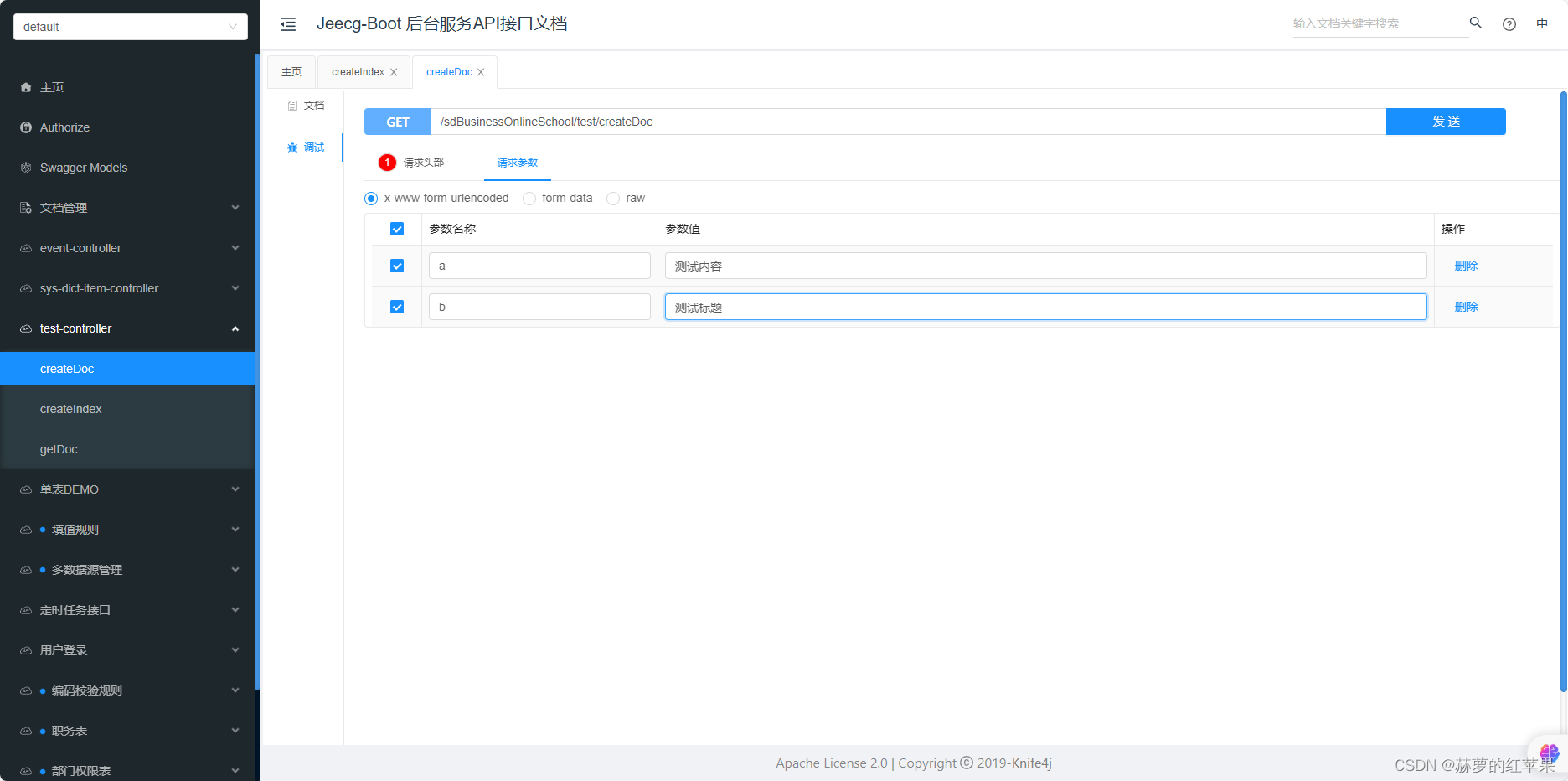
点击左侧的数据展示选项,右上角选中创建的索引,点击刷新,可以看到多了一条记录。
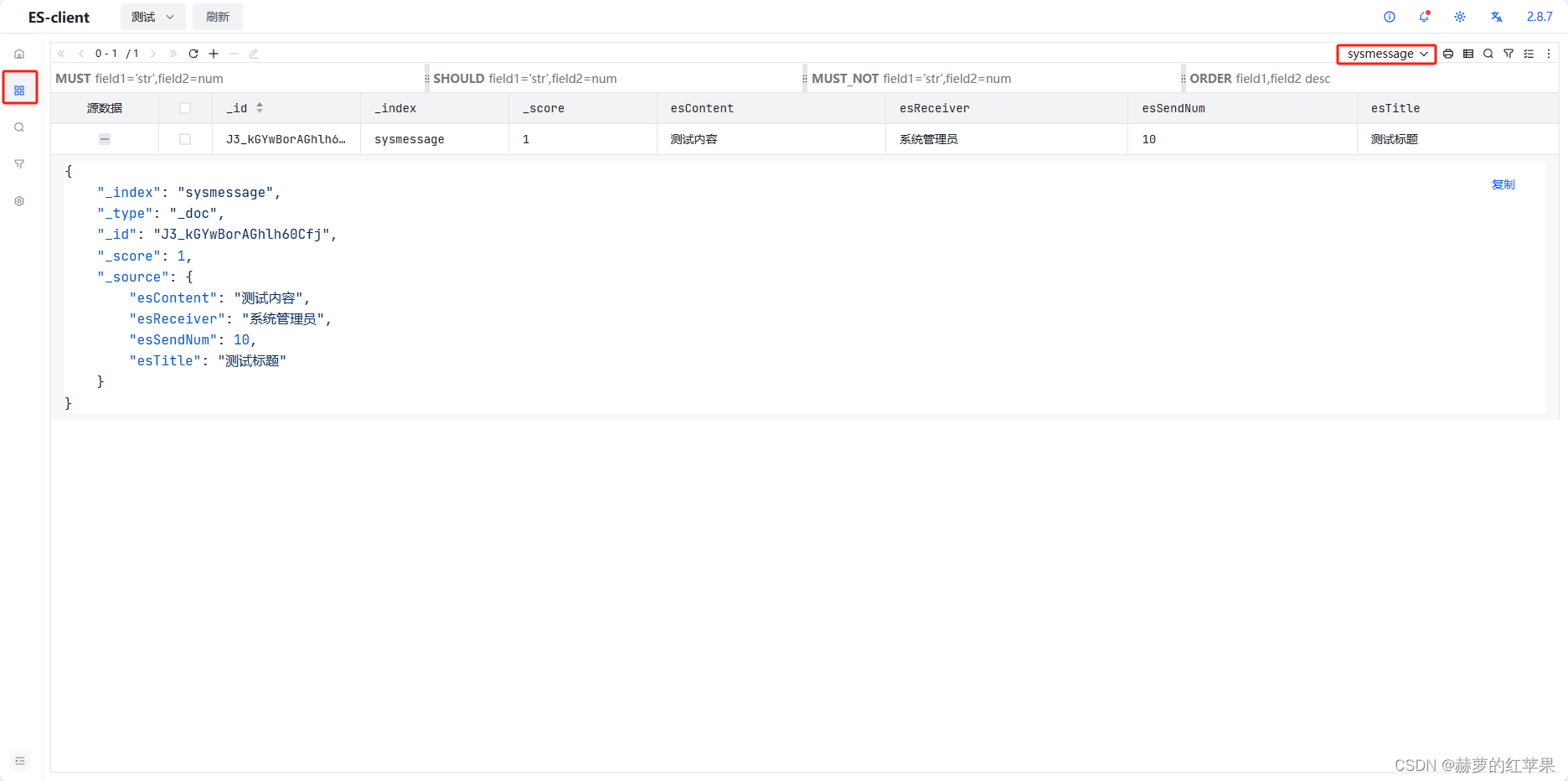
调用getDoc接口,查询记录,成功查出。
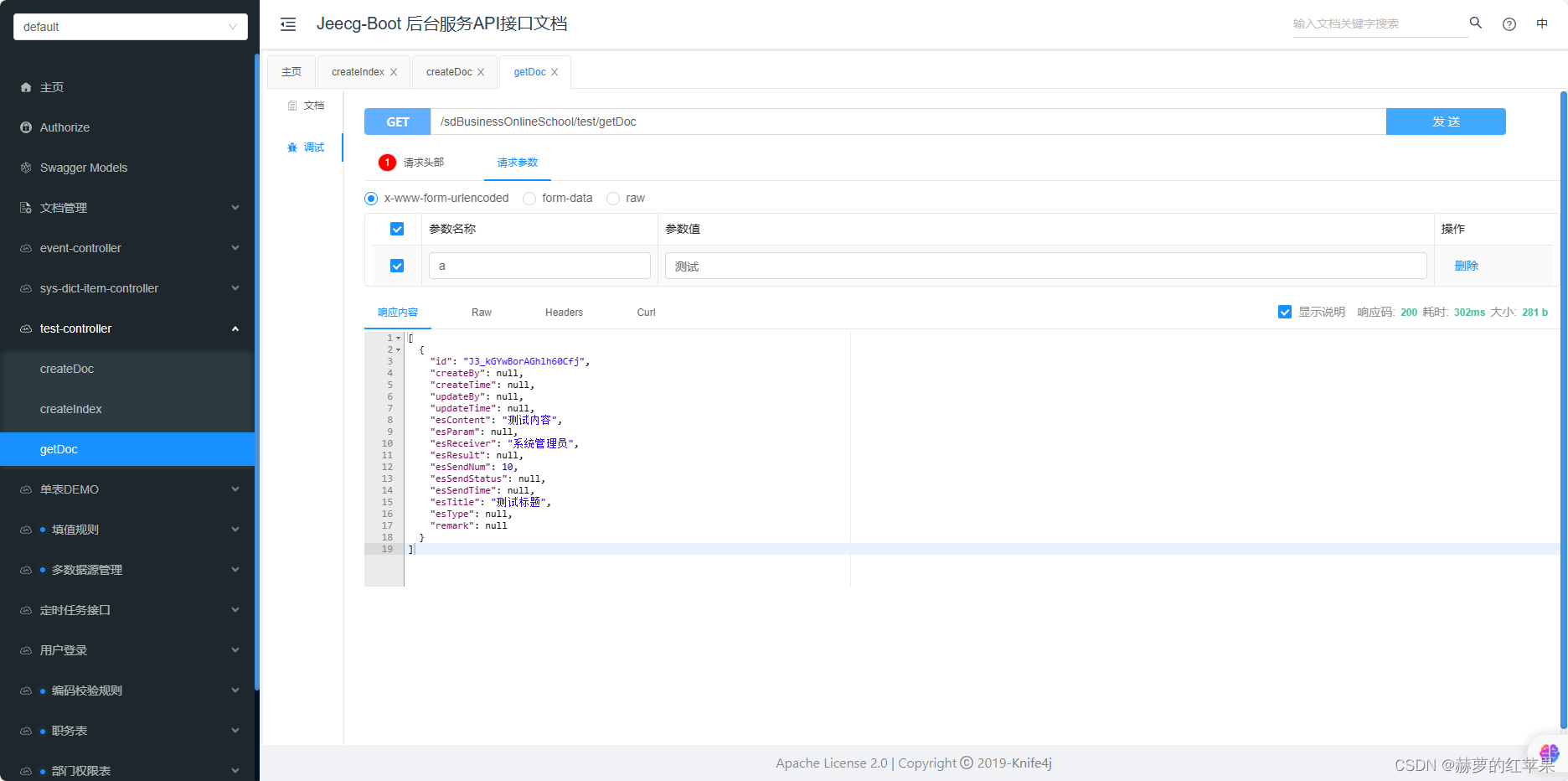
更新的语法和MybatisPlus的wrapper差不多。先用查询条件eq,in等去筛选要更新的记录,然后用set去设置新的值,然后调用update方法即可。(如下,通过“测试内容”找到记录,并将其的标题改成新的内容)
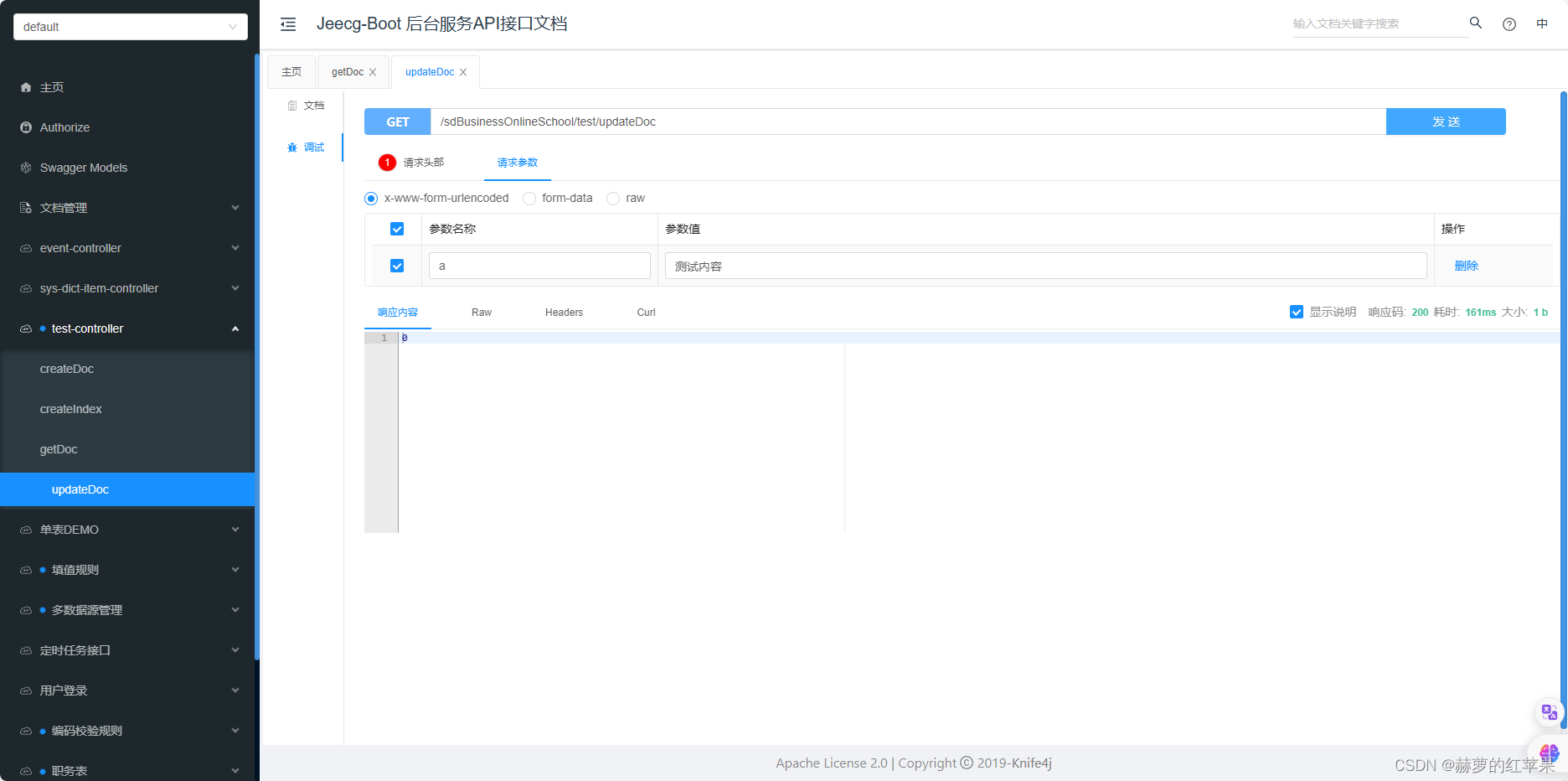
在浏览器刷新,可以看到数据更新了。
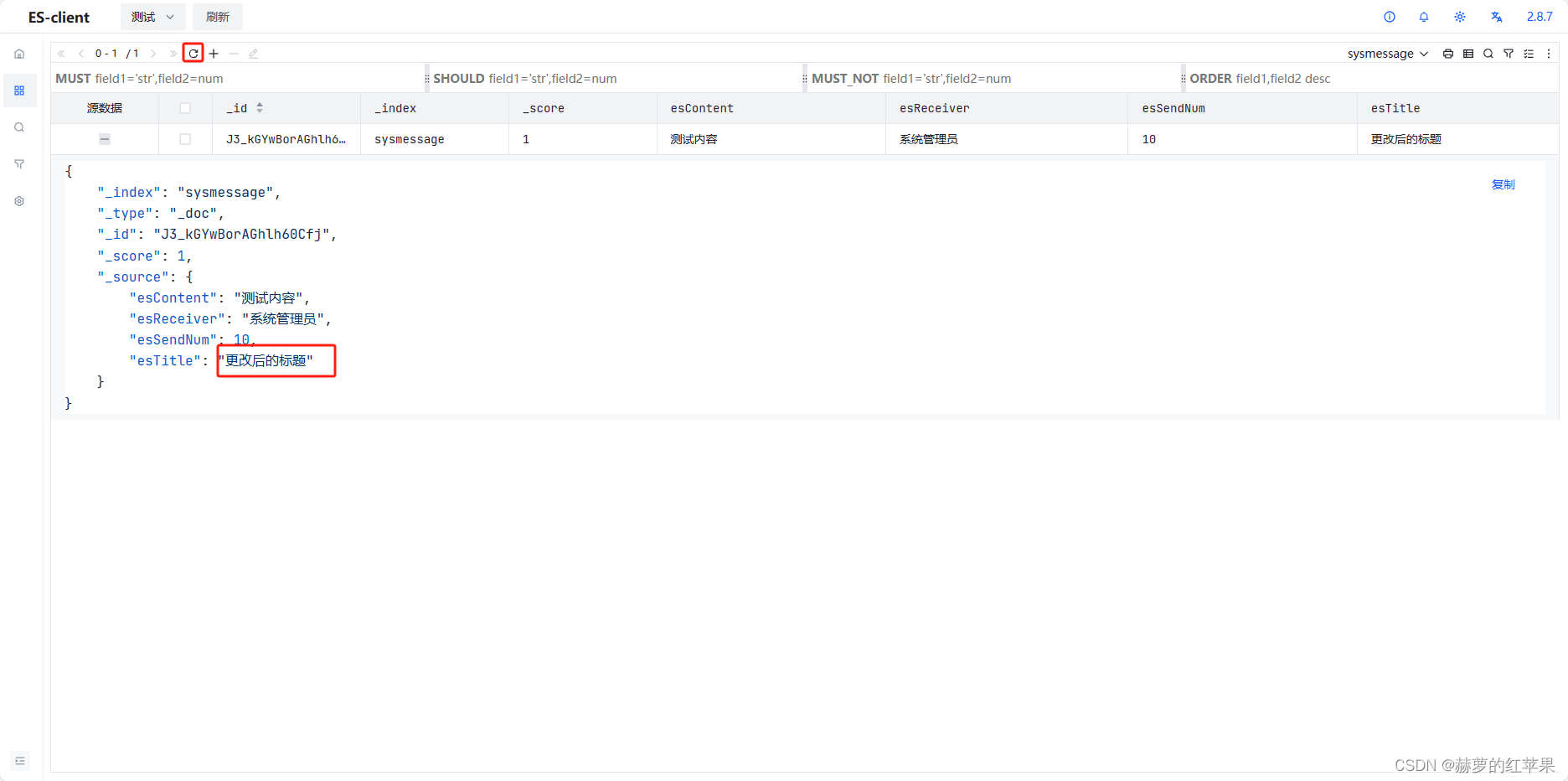
删除的语法比更新还简单,也是创建一个esupdatewrapper,用eq、in等筛选,然后调用delete方法就可以了,就不演示了。
总结
Springboot整合ES最大可能遇到的问题就是ES版本的问题,也就是依赖冲突。如果依赖冲突,在项目启动的时候会有一个ERROR日志提醒,看到了就想办法去掉原来带着的ES依赖或者更改依赖版本为7.14.0
想要了解easy-es的更多特性,建议去看easy-es的官网文档。
原文地址:https://blog.csdn.net/weixin_43975276/article/details/134670744
本文来自互联网用户投稿,该文观点仅代表作者本人,不代表本站立场。本站仅提供信息存储空间服务,不拥有所有权,不承担相关法律责任。
如若转载,请注明出处:http://www.7code.cn/show_37520.html
如若内容造成侵权/违法违规/事实不符,请联系代码007邮箱:suwngjj01@126.com进行投诉反馈,一经查实,立即删除!


![[软件工具]文档页数统计工具软件pdf统计页数word统计页数ppt统计页数图文打印店快速报价工具](https://img-blog.csdnimg.cn/direct/09dfbaff3e9a47a9a551dd65fef5d482.jpeg)

![[word] word中怎么插入另外一个word文档 #媒体#职场发展](https://img-blog.csdnimg.cn/img_convert/36ffef6b3060628ccf540a56f6069cb0.png)
